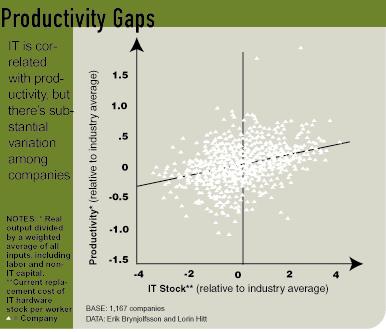In my morning flight, came across the newly developed IT Value Matrix published in the CIO Magazine. The article notes that this has been developed after nearly 18 months of work by dozens of CIOs, which illustrates the principles and practices essential to creating, identifying and communicating IT’s value to the enterprise. The matrix identifies approximately 130 components, grouped under three key practice areas :
- Stakeholder alignment,
- Communication and
- The CIO role.

I like the idea that it’s organized for drilling down from general to specific. For example, to achieve stakeholder alignment, CIOs need both knowledge and action. To learn what type of knowledge, you drill down one level and find four types: stakeholder analysis, political and cultural issues, technology trends and business dynamics. The key tenets of the framework are summarized as:
1] The primary goal of IT is to align with major enterprise objectives. Every initiative must be clearly tied in a provable way to business value.
2] Because all major business initiatives are dependent upon technology, the CIO must have a voice at the table at which key business decisions are made.
3] The CIO is responsible for understanding a business’s complexities, influencing peers and presenting technology strategy in terms the business can understand.
4] Technology leaders are agents of change. Transition is our stable state.
5] Communication and relationship building are as important to IT leadership as technology skills are.
6] Successful technology leadership must strike a balance between competing forces: short-term versus long-term, technology versus business focus, leading versus enabling.
7] The CIO is responsible for cultivating technology leadership at all levels.
A nice effort, one which would provide a breeding ground for the much talked about IT-Business connect and perhaps help in eliminating/reducing the mistrust between IT & Business. Some early developments related to the matrix shows some promise:
- CIOs who have come fresh to the finished matrix have already begun suggesting improvements, such as adding a social responsibility component.
- Case Western Reserve University’s plan to develop an MBA course based on the matrix.
Erik Brynjolfsson some time back reported that overall relationship between IT and productivity is positive. However, it's also evident that there's tremendous variation in performance among companies.  To many skeptics asking me with such frameworks can business achieve full benefits, I would like to point to Erik’s statement that IT is only the tip of a much larger iceberg of complementary investments that are the real drivers of productivity growth. It is found thatfor every dollar of IT hardware capital that a company owns, there are up to $9 of IT-related intangible assets, such as human capital—the capitalized value of training—and organizational capital—the capitalized value of investments in new business-process and other organizational practices. As I see it, increasingly the CIO role is becoming one of the toughest responsibility to shoulder and IT is becoming amongst the top three important factors for success in any large enterprise. Every effort towards helping business relaize value from IT deserves commendation.
To many skeptics asking me with such frameworks can business achieve full benefits, I would like to point to Erik’s statement that IT is only the tip of a much larger iceberg of complementary investments that are the real drivers of productivity growth. It is found thatfor every dollar of IT hardware capital that a company owns, there are up to $9 of IT-related intangible assets, such as human capital—the capitalized value of training—and organizational capital—the capitalized value of investments in new business-process and other organizational practices. As I see it, increasingly the CIO role is becoming one of the toughest responsibility to shoulder and IT is becoming amongst the top three important factors for success in any large enterprise. Every effort towards helping business relaize value from IT deserves commendation.
Category : BVIT, Emerging Trends
|

